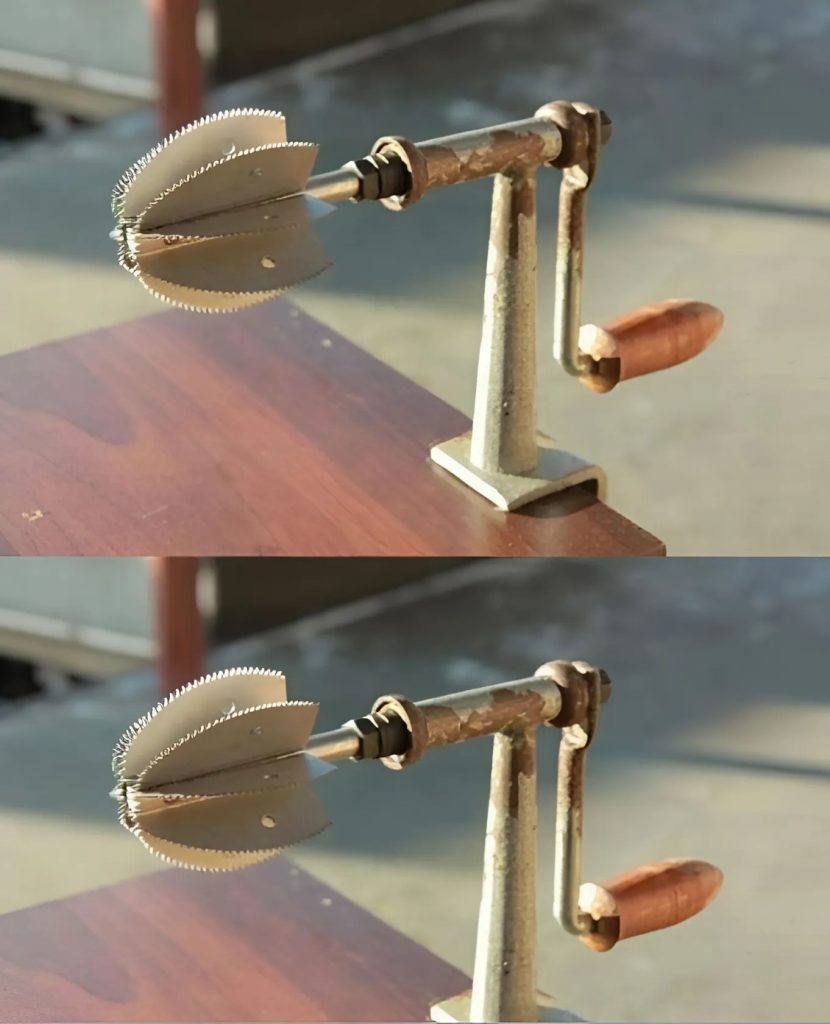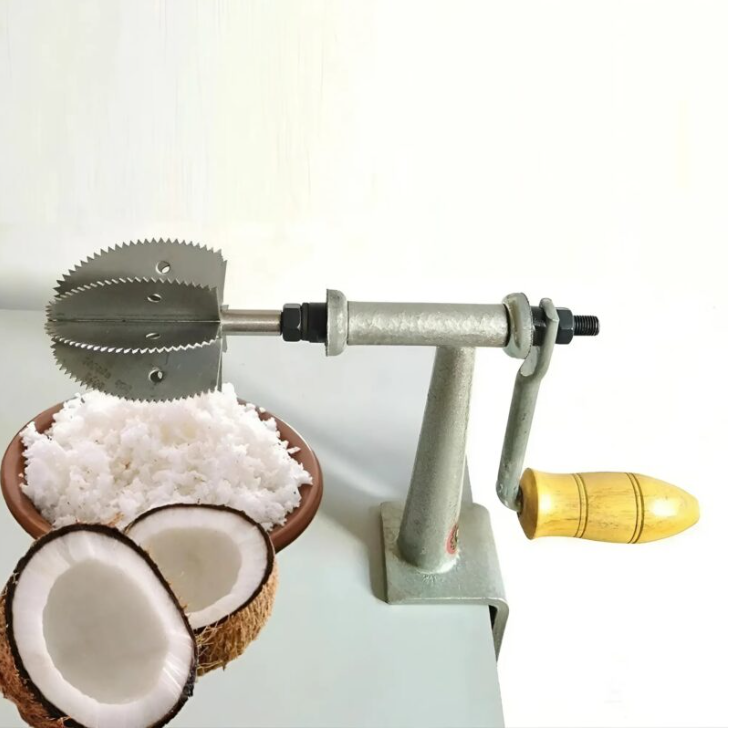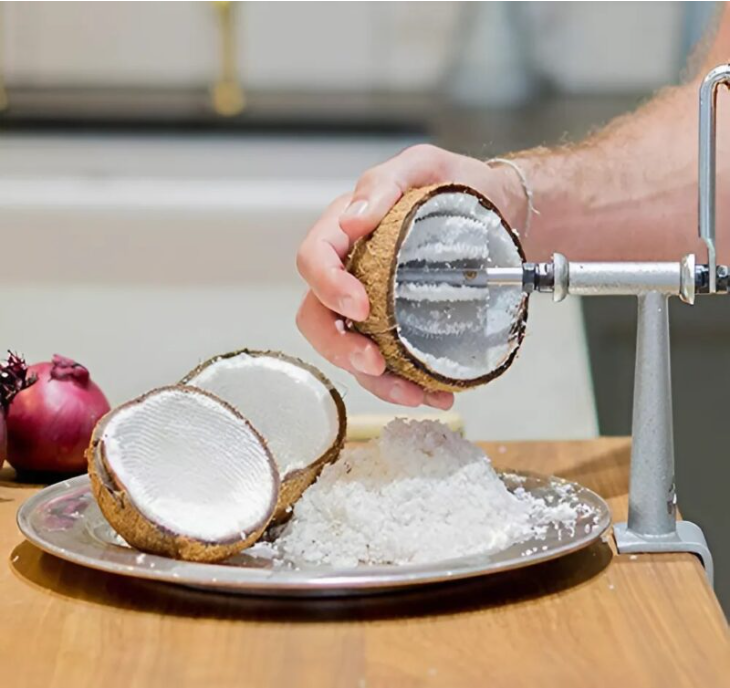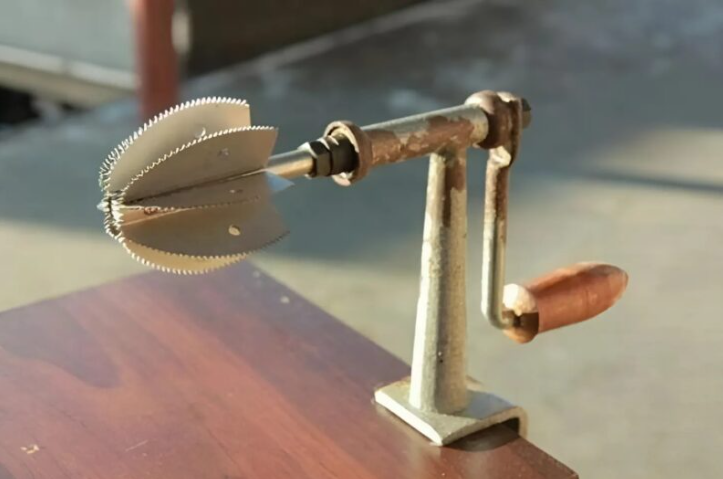Sometimes, the most unassuming tools have the most fascinating backstories. Take a glance at this little gadget—metal blade, curved edge, maybe attached to a wooden base. At first glance, it might seem like a relic from another time. But if you grew up in a tropical region or spent time in an old-school kitchen, you already know: this is the legendary coconut scraper.
Let’s dive into the story of this underrated kitchen essential that once played a starring role in daily cooking routines across countless cultures.

A Simple Tool with a Mighty Purpose
The coconut scraper may look basic, but it was a game-changer in the kitchen. Designed specifically to grate the soft white flesh from inside a coconut, this tool made what could’ve been a laborious task fast and efficient.
The traditional scraper usually comes in two forms:
- A manual bench-type scraper where you sit and scrape by hand
- A handheld or wall-mounted version for smaller tasks
Its metal blade features small sharp teeth or a serrated edge that grips and grates the coconut flesh into fine shavings—ready for curries, sweets, chutneys, or fresh coconut milk.
Before blenders and food processors came along, this tool was the backbone of coconut-based cooking.

Why Was It So Essential?
In many tropical countries—especially across South and Southeast Asia, the Caribbean, and parts of Africa—fresh coconut is a staple ingredient.
From savory dishes to sweet desserts, coconut added creaminess, texture, and that unmistakable rich flavor. But here’s the thing: getting to the meat of a coconut isn’t easy. You have to crack the hard shell, drain the water, and then somehow remove the flesh.
That’s where the coconut scraper came in. It made the whole process doable at home without needing industrial tools. This wasn’t just a utensil—it was a daily necessity.
Video: Fastest way to grate a Coconut😆 #shorts
A Cultural Icon in Tropical Kitchens
Ask anyone who grew up watching their grandmother or mother cook in a traditional kitchen—they’ll probably tell you about the coconut scraper. It wasn’t just a tool; it was part of the rhythm of life.
In Indian households, it was used to prepare everything from coconut chutney to payasam. In Thai cuisine, fresh coconut cream was made from the grated pulp. In the Caribbean, it played a role in both sweet cakes and savory stews.
Some scrapers were even beautifully crafted—wooden stools with decorative carvings, handed down through generations. In many ways, it was a symbol of heritage and homemade love.

The Decline: Modern Tools Take Over
So, why did this beloved kitchen tool begin to fade into the background? The answer is simple—convenience.
Electric mixers, grinders, and food processors changed the game. Suddenly, you could use a machine to shred coconut with the push of a button.
And then came pre-grated, frozen, and canned coconut—saving people even more time. The traditional scraper began to collect dust, tucked away in kitchen corners or left behind in grandma’s pantry.
Yet, many still believe that nothing beats the taste and texture of freshly hand-scraped coconut. Machines are fast, but they often compromise the quality and feel of the final dish.

The Resurgence: Back to Roots Cooking
Lately, as people return to slow cooking, mindful eating, and traditional methods, the coconut scraper is quietly making a comeback.
With the rise of farm-to-table and ancestral cooking trends, more home cooks are rediscovering this humble tool. It’s eco-friendly, requires no electricity, and offers an authentic culinary experience.
Plus, let’s be real—there’s something deeply satisfying about doing things the old-fashioned way. Using a coconut scraper forces you to slow down, connect with your food, and respect the process.
Video: Coconut Scraper UnBoxing (Wonderchef – Stainless Steel)
More Than a Tool—A Storyteller
The coconut scraper is more than just metal and wood. It carries stories. It’s seen festive cooking, early morning breakfasts, and secret family recipes. It reminds us of simpler times, filled with aroma, laughter, and the rhythmic sound of coconut being scraped.
Ask any elder in a tropical region and they’ll likely have a memory of it:
- “I learned how to use it when I was eight.”
- “My mom used to sit with it every Sunday.”
- “We had one carved with my grandfather’s initials.”
These stories are as rich as the coconut itself.
Conclusion
So, can you guess what this tool is now? That simple-looking gadget is the mighty coconut scraper—a once-essential tool that brought flavor to millions of meals across the world.
It may not be flashy, but it’s a quiet hero of the kitchen, rooted in tradition, culture, and pure functionality. While modern appliances may have nudged it out of everyday use, it’s far from forgotten.
In fact, in kitchens that cherish authenticity, the coconut scraper still holds a place of honor—reminding us that sometimes, the simplest tools carry the richest stories.